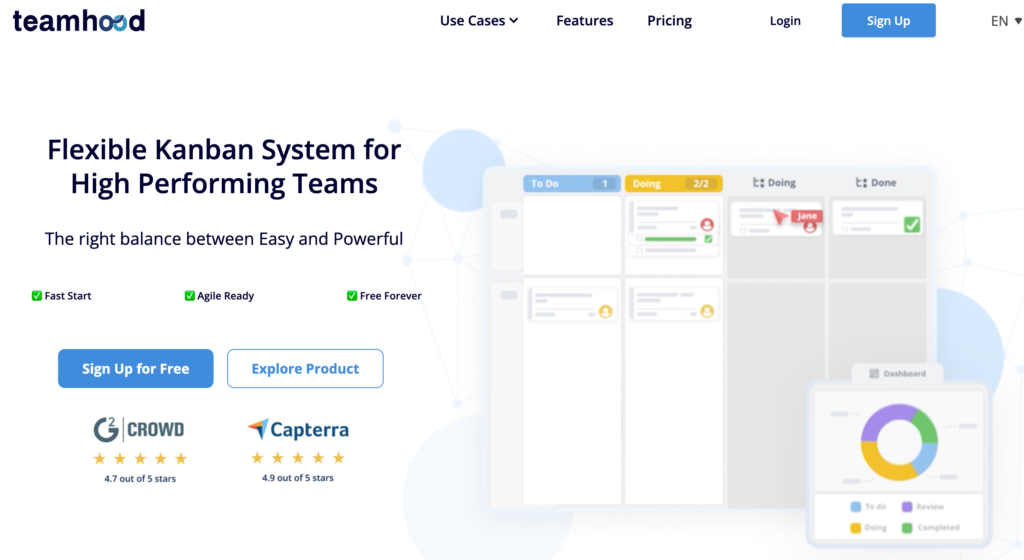This article showcases our top picks for the Best Kanban Project Management Software. We reached out to industry leaders and experts who have contributed the suggestions within this article (they have been credited for their contributions below).
We are keen to hear your feedback on all of our content and our comment section is a moderated space to express your thoughts and feelings related (or not) to this article This list is in no particular order.
Monday
This product was recommended by Gary Beckham from MetalicCards

This is the platform that your team will truly like using. To obtain visibility into the progress of your work, collaborate smoothly across teams and departments. To enable a smoother execution, keep everyone aligned with a platform they’ll love utilizing. Easily assign assignments and prioritize your team’s primary goals. Set project deadlines, milestones, and dependencies, and keep track of your entire team’s effort in one spot.
Jira
This product was recommended by Richard Lubicky from RealPeopleSearch

Jira, a project management software, with its framework based on Scrum methodology and Kanban, is a good tool developed by Atlassian with an option to integrate with over 800 plugins. The application offers a series of tools to manage the workflow of teams, and is therefore focused on a more operational and delivery approach. Jira is a paid software–and its value varies according to the number of users included. Your key concepts in JIRA are projects and tasks. Projects are used to group tasks. Tasks and subtasks are created within projects to be assigned to collaborators. When completed, the status of tasks changes automatically. The platform can generate real-time reports on team performance or percentage of completion for a deliverable.
Teamhood
This product was recommended by Anonymous

Teamhood is a visual Kanban tool that offers a lot of power to its users. Here you can modify the Kanban board with columns, rows, secondary columns and control the workflow with WIP limits. Moreover, Teamhood offers various project management features, such as Gantt charts, workload management, and time tracking. Allowing you to manage the full project lifecycle in one tool.
Trello
This product was recommended by Siva Mahesh from Dreamshala

Trello is a recommended web-based Kanban project management application that allows teams to manage project tasks, workflows, and communication. It’s been five years since our lean team has used Trello for many of our short-term projects. We at Dreamshala find Trello convenient for its user-friendly visual interface, which sets it apart from other Kanban-based project management apps. For a particular project, we create a list that categorizes items–from ideas, to-do lists, meetings, and so on. Inside a list, we can create cards to indicate the action items to fulfill. We update the lists and cards as the process continues through the day. Trello also supports real-time interaction through its integration with Slack.
Planview Leankit
This product was recommended by Jeff Mains from Champion Leadership Group LLC

Planview Leankit is a Kanban board that has horizontal swim lanes that help define the objectives of several projects running simultaneously. While most Kanban applications use the traditional vertical rows to represent phases in the process, Leankit allows you to visualize dependencies and simultaneous projects in a single view. You may adjust each of the project phases to meet the specific demands of your project since they are all flexible. Leankit allows you to access project overviews and statistics for each team’s projects. These capabilities are available in the native mobile app and the web interface. It offers numerous different pricing levels for its programs per user. Getting the features, integrations, and pricing that you want may involve some comparison shopping, but a 30-day free trial is available that does not require a credit card to test the waters.
MeisterTask
This product was recommended by Sienna Harris from iKissBags

This is the best project management software kanban that is easy to customize for various workflows. It comes in handy in an agile framework such as software development teams for sprints and serves other industries, including publications and marketing. The simple-to-use collaborative tool has reporting features, collects feedback and prioritizes milestone tracking and product road mapping. A good thing is it can also import from another kanban. However, it is not so great for integrations since there are limited options. Setting reminders isn’t easy, but the software delivers on its promise to be collaborative.
Asana
This product was recommended by Charlie Clark from Minty Digital

We would recommend Asana for project management as it provides the marketing team with a transparent framework to work on projects with. It’s simple to use, and contains all of the features you need to get work completed across teams without being too ‘feature heavy’. So of our favorite features of the product are the ability to comment on other people’s tasks, have an overview of what the team is working on, and solid reporting mechanisms with clear timelines so you can see everything that’s going on with a project. They also have a great free version if you want to try it out!
ProofHub
This product was recommended by Olivia Tan from CocoFax

ProofHub is a popular Kanban project planning software. It provides a timeline for each task. PoofHub is a project management software with a Kanban tool. ProofHub Remote and in-house teams love Kanban. Its visual nature is the best. It allows teams to self-manage as jobs move through many stages on the Kanban board. This work management software allows you to create task lists and assign jobs to team members. You may also choose who to subscribe to. With an online Kanban board, you can also link a process to the list. This means you can get a visual depiction of jobs placed in columns, each representing a stage of the procedure. As you work on the project, it will proceed through stages. They can now work on the assignment allocated to them in the next stage and move it to the next column when finished.
SwiftKanban
This product was recommended by Catriona Jasica from Top Vouchers Code

SwiftKanban is a powerful Project Management software for both distributed and co-located teams. It integrates the best visual project management, Kanban, and Scrum to provide you with a strong lean/agile software development tool. So, if you are looking for an effective solution for your project management, opt for SwiftKanban.
KanbanTool
This product was recommended by Chiara Gomiero from Handy Wine Guide

This straightforward task management application will give you and your team the ability to see their Kanban process on a digital board and key Kanban functionalities. If you need a tool that can track mid to large projects and with modern project management features look elsewhere.
ZenHub
This product was recommended by Shiv Gupta from Incrementors

ZenHub is a kanban program that focuses on team communication through the use of kanban boards in conjunction with plan roadmaps, task boards, and the ability to generate automatic reports. It was designed to interact with GitHub, making it perfect for kanban teams who operate in that environment. Once configured, workspaces may be automated and synchronized with pull requests. Kanban software may assist detect bottlenecks and is a good match for developers who are already familiar with GitHub, which it can link to for burndown charts, velocity monitoring, and so on. The kanban tool is likewise restricted to Kanban project management, and you cannot create several boards for various teams. Everyone is operating from the same group of instructions. If there is a technique to accomplish this, it is not obvious and may frustrate users.
ClickUp
This product was recommended by Daniela Sawyer from FindPeopleFast

If you are looking to create a custom-fit user experience, Clickup will help you do that and much more. There is board view separated columns. You will need to click less by sorting your board view. Using work in progress limits enabled, you can easily identify which columns need immediate attention from the employees.
















